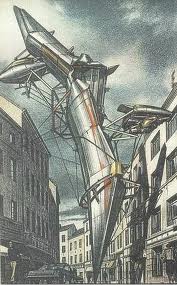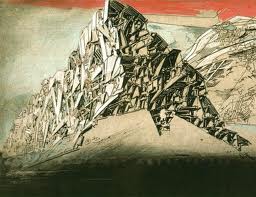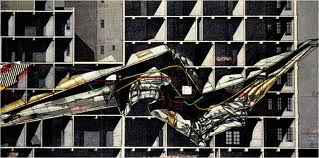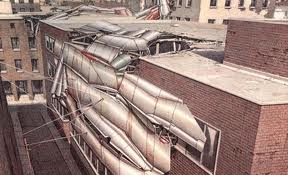Lebbeus Woods (1940-2012): Visionary Architect
 Wednesday, November 14, 2012 at 4:56PM
Wednesday, November 14, 2012 at 4:56PM Recently, an architect named Lebbeus Woods died at age 72 in New York as the city was still reeling from hurricane Sandy. He was not as well known outside of academic circles since his work consisted primarily of Deconstructionist drawings and theoretical writings, and the media coverage of the storm eclipsed the news of his passing. It was a great loss, as he played an important role in my formal education—I studied his works and writings and incorporated some of his ideas into my thesis at Catholic University—and so I wanted to pay tribute to this unique man.
Early in his career, he worked as a practicing architect under Eero Saarinen and later as part of his own practice. Primarily though, he was a professor of architecture at Cooper Union, and above all, a theoretician. He was known for very innovative, well-crafted paper architectural drawings of structures that were designed to provoke thought. Only once did his plans for a permanent structure ever get built.
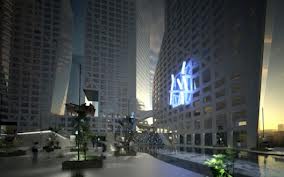 Light Pavilion in Chengdu, China. Built.
Light Pavilion in Chengdu, China. Built.
His depiction of buildings and urban landscapes had a dystopian, science fiction-like quality to them. Often, he would design structures for cities that had undergone a violent man-made or natural disaster, such as Sarajevo after the Balkan Wars or San Francisco after an earthquake. Sometimes, these structures would be created to indicate that a catastrophe had happened, like “scabs over a wound”, in order to show healing. The purpose of these elements were to create networks of buildings that begin to knit together fractured landscapes.
Woods was also very interested in seeing what architecture could do to help address human problems. Although his forms may have been unusual and fragmented, his goal his to get people to see what was possible outside of existing 'traditional' building conventions. “I’m not interested in living in a fantasy world,” he said. “All my work is still meant to evoke real architectural spaces. But what interests me is what the world would be like if we were free of conventional limits. Maybe I can show what would happen if we lived by a different set of rules.”
He was serious enough about his mission to create the Research Institute for Experimental Architecture in 1988 in order to explore his ideas. The mission statement reads: “RIEA is a non-profit institution with the purpose of advancing experimentation and research in the field of architecture, in response to changing political, economic, technological and cultural conditions in the contemporary world."
The comment sections on articles about Wood's death have praised his vision, his consciousness, and his innovation. His drawings displayed in museums and his writings on his own blog have influenced many people.
His fantastical works and meticulous drawings were inspiring to me and opened up ideas in architecture I had not been exposed to. His presence will be sorely missed.
 Deconstructivism,
Deconstructivism,  Lebbeus Woods
Lebbeus Woods 
